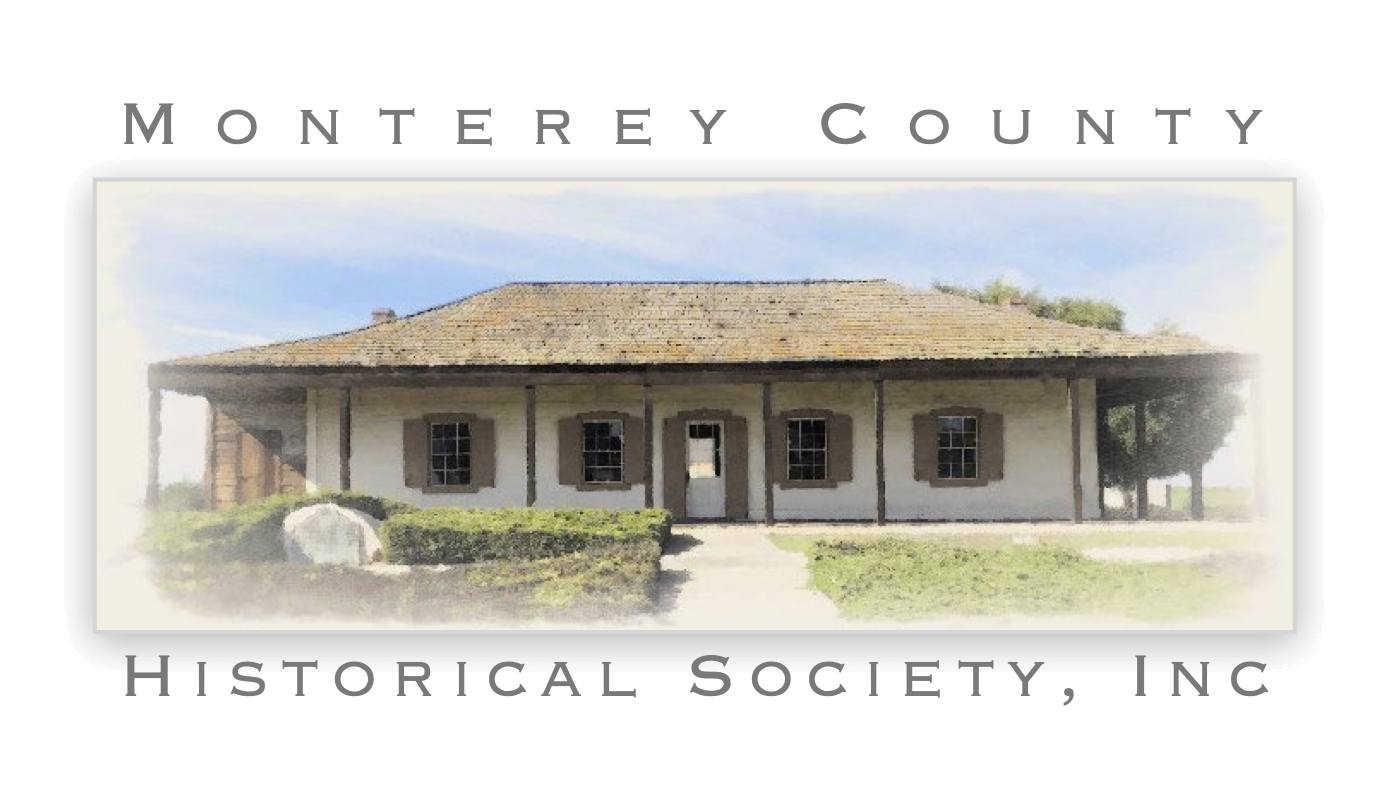Jacob P. Leese purchased the Rancho Sausal in 1852. He subsequently claimed 10,242 acres, and it was patented to him in 1859. Leese built a prefabricated house on the rancho–the two-story building was first built in Massachusetts, shipped around the Horn, set up in Peru, and then torn down and shipped to the rancho. This is probably the first frame house built in Salinas; it was located on the road between Salinas and Natividad.
Leese was one of the founders of Salinas, but indirectly as he actually left the area in 1865 and did not return until 1885. Leese sold 80 acres of his Rancho Sausal, along the southern edge of his ranch, to Deacon Elias Howe. (Howe reportedly received the name “Deacon” when he presided at a funeral in the absence of a clergyman.)
Howe had performed odd carpentry jobs on the rancho for Castros and later for Leese, and in 1856, perhaps as part of his pay, he acquired the land inside the “big bend” in the Alisal Slough. In that same year, Howe built a house at the intersection of the two stage routes–between Monterey and San Juan Bautista and between Los Angeles and San Francisco. Lying half way between Monterey and San Juan, it soon became known as the Half Way House.
This was the first structure built in the area which would eventually become downtown Salinas. Augusta Fink reports that Howe was able to attract customers by setting up bets on which stage would arrive first. Drivers soon were whipping their horses into a lather in an effort to reach the stage stop first. Howe’s business boomed, and a rival establishment at Natividad eventually closed.
| One of the most famous stagecoach drivers in California was Charley Parkhurst. Charley was lean, lantern-jawed, chewed tobacco and was a terror when it came to reaching Howe’s first. Soon, whole cases of whiskey were bet on Charley’s prowess. Only after Parkhurst’s death in 1879 was it discovered that “Charley” was really “Charlotte” Parkhurst! |
In spite of his apparent success with the Half Way House, Deacon Howe sold it only eighteen months after he purchased it. The new owner was Alberto Trescony.
At the site of the Half Way House, Trescony soon built a small hotel, general merchandise store, a blacksmith shop and stable at the edge of the slough. This expansion marks the true beginning of Salinas–the small hotel stood on the site of the Abbott House, later the Cominos Hotel, and was the heart of the community for many years.
Trescony employed Austin Smith and Charles McFadden to manage the hotel in the early 1860s, and Smith accepted the job as Postmaster when the Salinas Post Office was moved from Hilltown to Trescony’s in 1864. Later Smith and McFadden operated the general merchandise store. In 1867 Trescony sold to Alanson Riker.
In March of 1873, Carlisle S. Abbott purchased the American Hotel, on the site of Deacon Howe’s Half-Way House, and began work on a three story brick hotel 126 feet wide and 60 feet deep. The American Hotel was moved to the rear, and served as an annex to the new hotel, which was named the Abbott House. Also early in 1873 Jesse D. Carr led in the organization of the Salinas City Bank, the first in the county. It was situated immediately adjacent to the Abbott House. The bank and hotel even had asphalt sidewalks installed!
Abbott was one of the founders of the Monterey & Salinas Valley Railroad, between Salinas and Monterey. The railroad started out well, but a draught in 1876-1877 ruined the crops, and unseasonable rains the next year ruined them again. Abbott was unable to recover from the financial disaster of his narrow gauge line. He subsequently sold the Abbott House to David Jacks and moved to Arizona.
For the next part of the story see the essay on the Abbott House and Cominos Hotel.
Copyright 2000 by G.S. Breschini
Sources:
- Abbott, Carlisle S., Recollections of a California Pioneer (The Neale Publishing Company, New York, 1917).
- Breschini, Gary S., Trudy Haversat, and Mona Gudgel, 10,000 Years on the Salinas Plain: An Illustrated History of Salinas City, California (Heritage Media, Carlsbad, 2000).


